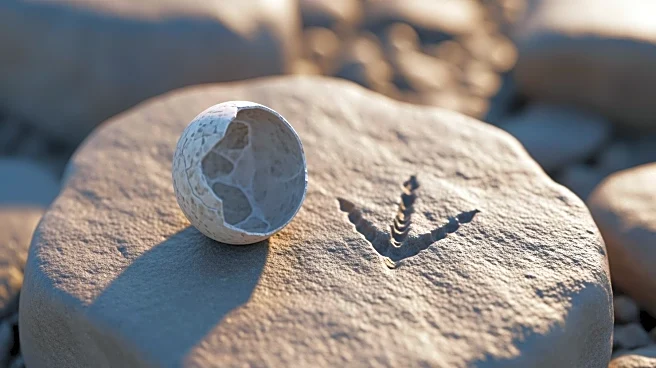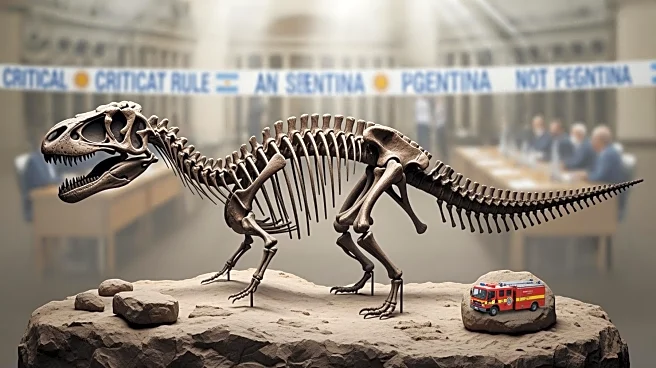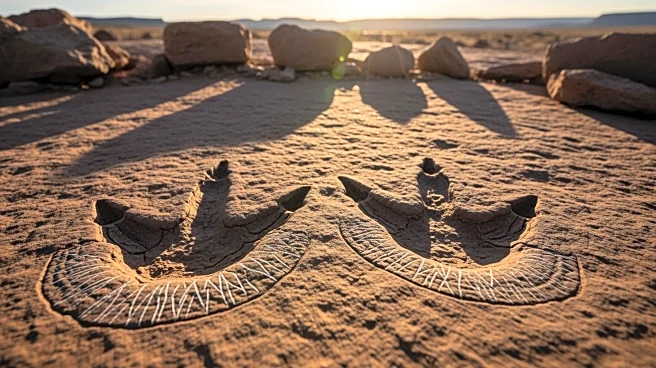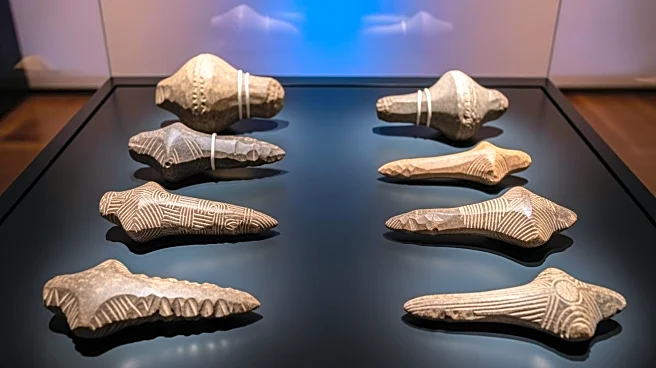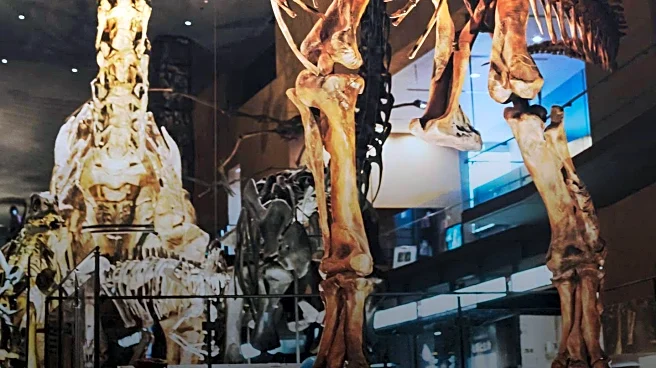What's Happening?
A significant paleontological discovery has been made with the identification of the first-ever ankylosaur hatchling fossil, belonging to the species Liaoningosaurus paradoxus. This 115-million-year-old
specimen provides a rare glimpse into the early life stages of armored dinosaurs. The fossil, discovered through histological analysis, shows a 'hatching line,' indicating the dinosaur died shortly after emerging from its egg. This discovery challenges previous assumptions about the size and development of Liaoningosaurus, suggesting it may not have been the smallest ornithischian dinosaur as previously thought. The hatchling's anatomy differs from other ankylosaurs, highlighting the diverse evolutionary paths within this group.
Why It's Important?
The discovery of the ankylosaur hatchling fossil is crucial for understanding dinosaur growth and development. It provides direct evidence of juvenile dinosaur anatomy and growth patterns, offering insights into how these creatures matured over time. The findings challenge previous assumptions about the size of Liaoningosaurus, suggesting it may have been larger than previously believed. This discovery opens new avenues for research into the environmental factors influencing dinosaur development and contributes to a broader understanding of ankylosaur evolution. The study enhances our knowledge of dinosaur life stages, which is essential for reconstructing their life history and evolutionary adaptations.
What's Next?
The discovery raises new questions about the life cycles and habitats of ankylosaurs, particularly why adult fossils of Liaoningosaurus have not been found. Researchers speculate that juvenile individuals may have lived near water, suggesting different environmental adaptations for adults. Further research and excavations are needed to explore these possibilities and uncover more about the developmental stages and habitats of these dinosaurs. The study encourages paleontologists to continue investigating ankylosaur fossils to gain a deeper understanding of their evolutionary history and ecological adaptations.
Beyond the Headlines
The hatchling fossil provides a unique opportunity to study dinosaur growth at the histological level, revealing microstructures in the bone that indicate rapid growth typical of juvenile dinosaurs. This analysis contributes to a broader understanding of dinosaur growth rates, health, and behavior. The discovery also highlights the importance of preserving fossils in remarkable detail, allowing scientists to make inferences about the life history of these ancient creatures.
